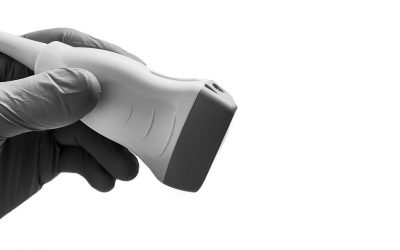This pandemic has confirmed a reality for us: hospitals are for acute patients. Although this is not new, we are now able to put it into action: now more than ever our home is our shelter. Home health care, specifically in the field of vascular access, IS feasible. Today I will tell you a little about my experience with María, a patient in palliative care at home who needed a Midline Catheter.
It was a Saturday. Almost three months had passed since the start of the state of alarm. María had received a diagnosis of terminal cancer in February 2020. She was informed first-hand, and her character as a strong independent woman allowed her to be very present throughout the process, making her own decisions. Her children were with her in the days that followed her operation. Soon, however, the pandemic broke out in Madrid and María was discharged home with a poor prognosis: bedridden, lucid, but unable to get up or move. She could barely swallow water or eat some yogurt. Her children called us, so we went to take care of their mother and her close family.
After a few weeks, Maria could no longer swallow. The only thing that calmed the pain was to be administered orally. Therefore, we had no way of treating her. Although the subcutaneous route was a possibility, Maria suffered from fever and needed antipyretics and hydration. However, she still had some time left with us. She still had chapters to close with her family, and probably with herself before she left. The photos in her room, all from holidays, spoke volumes about this adventurous and brave woman who was not going to give up easily; her gaze confirmed it.

Although her children never left her alone, they were distressed as caregivers at not being able to give her water, a basic care in their opinion. “Maybe administering water through a vein would be good for her.” they proposed. It was almost a plea. It was their way of continuing to take care of their mother, they way to relieve her. According to her children, Maria has suffered her entire life from terrible peripheral veins. “Please don’t prick her too much and, above all, don’t take her to the hospital.” they asked us. Maria shook her head, and we already knew that she was a DIVA patient.
IN THE FACE OF DIFFICULTIES, A SOLUTION APPEARED: THE MIDLINE CATHETER
When facing a similar situation (unfortunately, it is not fictitious and is all too common in palliative patients at home), bedside care is essential. It means “in the person’s own bed”, “at home”, “with their loved ones”.
So, we went for it. Maria’s deep veins could be seen with the ultrasound. We had a good calibre basilica vein in the green zone. We could fit a Midline! Although the medical team celebrated this option, the family had doubts. We therefore explained the technique in detail: painless, lasting a few minutes, with the possibility of being able to administer “water and medicines with a single puncture”. This allowed them to understand the advantages. So, the room was converted into a small operating theatre: sterile field, ultrasound, probe cover, anaesthesia, maximum barrier protections, etc. Everything required a ultrasound guided modified Seldinger.

Fortunately, we had access to a wireless probe that made it easy for us to work in this context. Maria did great, her children helped us with everything and, finally, the Midline was in place. We had succeeded: the tip was observed in the midclavicular line. A high flow, 4Fr catheter was ready for use. Hydration began immediately, analgesic was administered and, finally, Maria fell asleep for a while; her family starting feeling better.
Maria died a few weeks later due to the natural evolution of her illness. It always hurts when a patient leaves, but at the same time it is always moving when loved ones, crying, look at you, smiling, and thank you.
In the midst of the pandemic, with the restrictions that we were forced to observe, and with the added complication of Maria’s delicate situation (both physical and emotional), we were able to count on a catheter that helped us fulfil her wish: to die in her bed, in her home, without pain, with her little dog Mike at her feet, her four children around her, her granddaughters doing her hair, and taking care of her.
As a professional, I consider it essential to adapt (almost all) our activity to home, and nowadays, possibly more so than before.
Looking beyond COVID19, I wonder whether vascular access in cancer (or palliative) patients may be a more than plausible, safe, simple, useful, and practical possibility in the long term, as it is already the case in many other countries. Here, the Midline was an ideal option for peripheral treatment (a few weeks in this case) with a low risk of thrombosis and infection and a high percentage of success and satisfaction. Literature findings suggest less stress for the patient and the family, less perception of pain, durability, and safety, together with very low rates of complications. Family involvement also comforts those close to you, makes them participate in decisions, and even allows them to be our “helpers” (to open a serum or hold their mother’s hand and talk to her during insertion of the catheter), thus making it an integral part of the close and intimate care that is end-of-life care.
The hospital is an emotionally hostile environment, although irreplaceable for some processes. My reflection (and deep conviction) is that we can take care, attend, solve, and fulfil countless needs at home in an environment of maximum human warmth. This is a clear example of what we could call “the hospital at home”.
Place a catheter at home? Why not.
In the end, you know, there’s no place like home.
Dedicated to María (not her real name to preserve privacy), her family and all the nurses who work at home.
References:
- DAV Expert [Mobile application software]. (V.1.0.0). Milan, Italy: GAVeCeLT. (2018). Retrieved (May 23, 2020) from: https://play.google.com/store/apps/details?id=it.gavecalt.davexp&hl=en
- Pittiruti M, Scoppettuolo G. PICC and Midline GAVeCeLT Manual. Indications, Insertion, Handling. 2017. Edra Edizioni
- Elli S, Pittiruti M, Pigozzo V, Cannizzo L, Giannini L, Siligato A, Rondelli E, Foti G, Lucchini A. Ultrasound-Guided Tip Location of Midline Catheters. J Vasc Access. 2020. doi:10.1177/1129729820907250
- Bortolussi R, Zotti P, Conte M, et al. Quality of Life, Pain Perception, and Distress Correlated to Ultrasound-Guided Peripherally Inserted Central Venous Catheters in Palliative Care Patients in a Home or Hospice Setting. J Pain Symptom Manage. 2015; 50 (1): 118-123. doi:10.1016/j.jpainsymman.2015.02.027
- Giuliani J, Andreetta L, Mattioli M, et al. Intravenous midline catheter usage: which clinical impact in homecare patients ?. J Palliat Med. 2013; 16 (6): 598. doi: 10.1089 / jpm.2012.0615
- Bahl A, Karabon P, Chu D. Comparison of Venous Thrombosis Complications in Midlines Versus Peripherally Inserted Central Catheters: Are Midlines the Safer Option ?. Clin Appl Thromb Hemost. 2019; 25: 1076029619839150. doi: 10.1177 / 1076029619839150
- Chopra V, Kaatz S, Swaminathan L, et al. Variation in use and outcomes related to midline catheters: results from a multicentre pilot study. BMJ Qual Saf. 2019; 28 (9): 714‐720. doi: 10.1136/bmjqs-2018-008554
- Dickson HG, Flynn O, West D, Alexandrou E, Mifflin N, Malone M. A Cluster of Failures of Midline Catheters in a Hospital in the Home Program: A Retrospective Analysis. J Infus Nurs. 2019; 42 (4): 203-208. doi: 10.1097 / NAN.0000000000000330
- Fabiani A, Dreas L, Sanson G. Tunneling a midline catheter: When the traffic light shifts from yellow to green. J Vasc Access. 2018; 19 (6): 667-671. doi: 10.1177 / 1129729818769032
- Tao F, Wang X, Liu J, Li J, Sui F. Perioperative application of midline catheter and PICC in Patients with gastrointestinal tumors. J BUON. 2019; 24 (6): 2546‐2552.
- Adams DZ, Little A, Vinsant C, Khandelwal S. The Midline Catheter: A Clinical Review. J Emerg Med. 2016; 51 (3): 252‐258. doi: 10.1016 / j.jemermed.2016.05.029
- Dumont C, Getz O, Miller S. Evaluation of midline vascular access: a descriptive study. Nursing. 2014; 44 (10): 60-66. doi: 10.1097 / 01.NURSE.0000453713.81317.52



